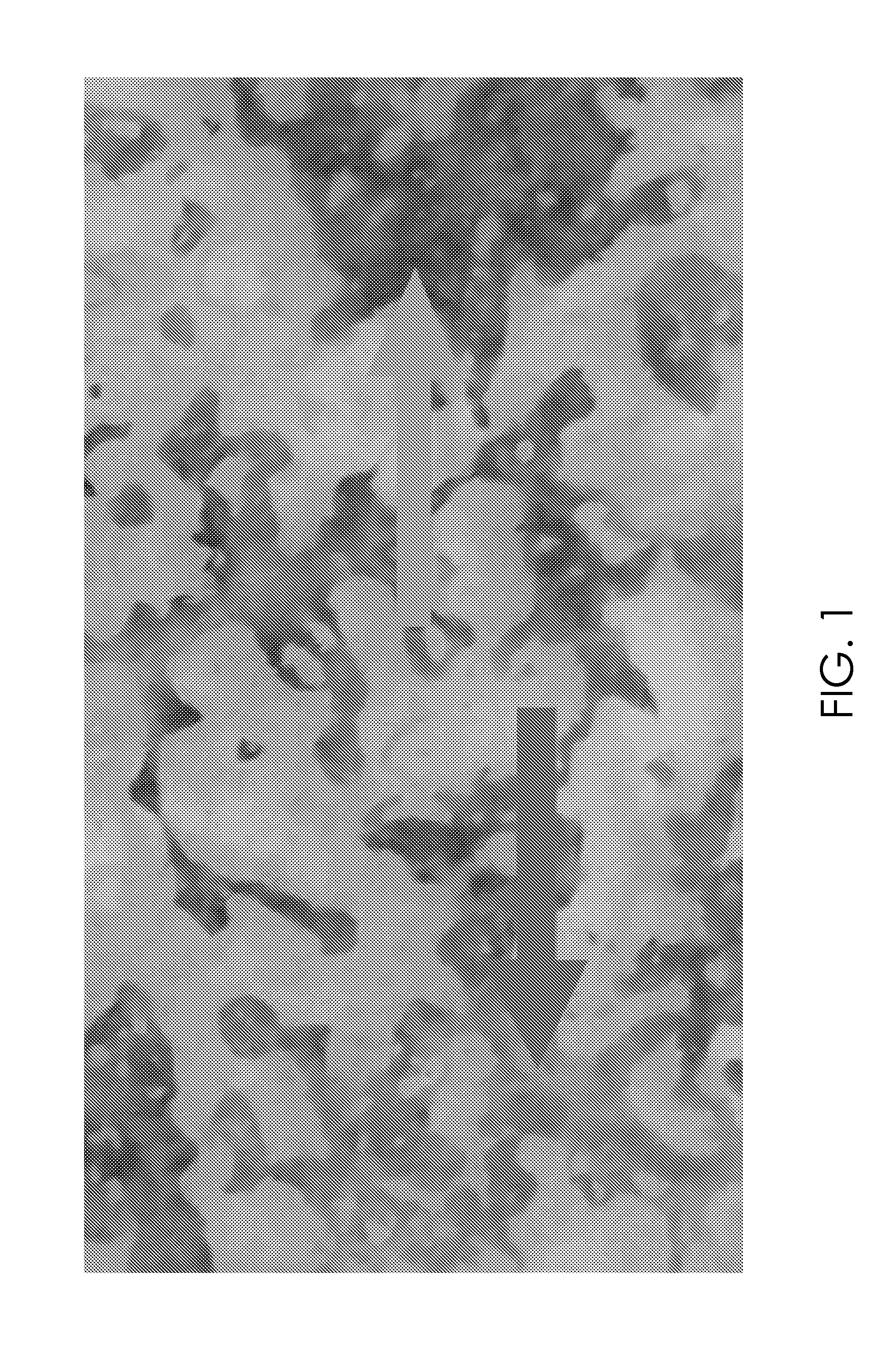Methods of Culturing Retinal Pigmented Epithelium Cells, Including Xeno-Free Production, RPE Enrichment, and Cryopreservation
a retinal pigmented epithelium and cryopreservation technology, which is applied in the field of culturing retinal pigmented epithelium cells, including xeno-free production, cryopreservation, and cryopreservation, can solve the problems of amd, amd is a leading cause of vision loss in persons 60 years of age, and few therapies availabl
- Summary
- Abstract
- Description
- Claims
- Application Information
AI Technical Summary
Benefits of technology
Problems solved by technology
Method used
Image
Examples
example 1
Exemplary Protocol for the Transition of Pluripotent Cells from Non-Xeno-Free Culture Conditions to Xeno-Free Culture Conditions
[0098]This exemplary protocol describes the transition of pluripotent human embryonic stem cells cultured (hESC's) under non-xeno conditions to fully xeno-free culture conditions. The starting materials are hESC's grown on Matrigel™ (BD Biosciences) (murine-derived protein mix) culture substrate, in mTeSR-1™ (StemCell Technologies) growth media, which contains bovine-derived BSA. The xeno free media in this Example is X-Vivo 10™ and the xeno-free substrate is Synthemax™.
[0099]Pluripotent cells are transitioned into new medium and onto new substrate consecutively. In this protocol, cell survival and viability is enhanced by transitioning cells into xeno-free medium gradually, over a period of passages, which takes about 4 weeks.
[0100]All passages are performed by manual dissection. All culture media contain 50 μg / ml Normocin to minimize chance of contaminati...
example 2
Culture and RPE Differentiation from Human Embryonic Stem Cells
[0111]This Example describes an exemplary protocol for the culture and differentiation of hESC's on Synthemax™, with X-Vivo 10™ media.
[0112]All passages of undifferentiated hESC are performed by manual dissection. Note that culture and differentiation media contain 50 μg / ml Normocin to minimize chance of contamination in long term experiments. Use of 100 μg / ml Normocin is not recommended for culture of undifferentiated hESC's because they exhibit increased cell death. A 6-well plate format is used for all culture procedures using a total volume of 4 ml medium per well. For aid in identifying differentiated vs. undifferentiated hESC colonies, reference to pages 5-7 of Human Stem Cell Manual A Laboratory Guide, Eds: Loring, J. F., Wesselschmidt, R. L., and Schwartz, P. H. (2007) may be made.
[0113]Undifferentiated hESC's are maintained on substrate-coated 6-well plates in X-Vivo 10™ medium containing 80 ng / ml human bFGF, 0....
example 3
Derivation of RPE Cells from Pluripotent Cells Under Xeno-Free Culture Conditions
[0118]Using methods based on the exemplary protocol described in Example 2, RPE cells were produced under xeno-free culture conditions. H9 human embryonic stem cells were plated in two wells of a standard six-well plate coated with Synthemax™. The H9 cells were cultured in X-Vivo 10™ medium supplemented with 80 ng / ml human bFGF+0.5 ng / ml TGFβ1. After two passages, six wells of undifferentiated H9 cells were present. When the cells reached 85-95% confluence, the growth medium was changed to X-Vivo 10™ without growth factors. Spontaneous differentiation of the plated cells commenced.
[0119]At 120 days after the initiation of differentiation, the wells contained darkly pigmented cells, with coverage of the darkly pigmented cells in the range of 15-60% of the substrate area. Darkly pigmented cells exhibited RPE physical morphology. Darkly pigmented cells were excised and assayed for markers of RPE phenotype,...
PUM
 Login to View More
Login to View More Abstract
Description
Claims
Application Information
 Login to View More
Login to View More - R&D
- Intellectual Property
- Life Sciences
- Materials
- Tech Scout
- Unparalleled Data Quality
- Higher Quality Content
- 60% Fewer Hallucinations
Browse by: Latest US Patents, China's latest patents, Technical Efficacy Thesaurus, Application Domain, Technology Topic, Popular Technical Reports.
© 2025 PatSnap. All rights reserved.Legal|Privacy policy|Modern Slavery Act Transparency Statement|Sitemap|About US| Contact US: help@patsnap.com

